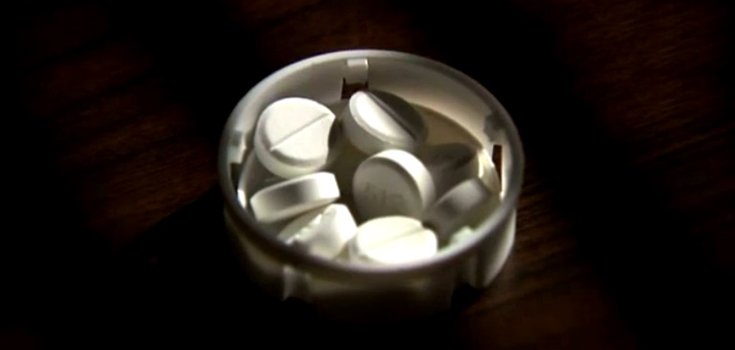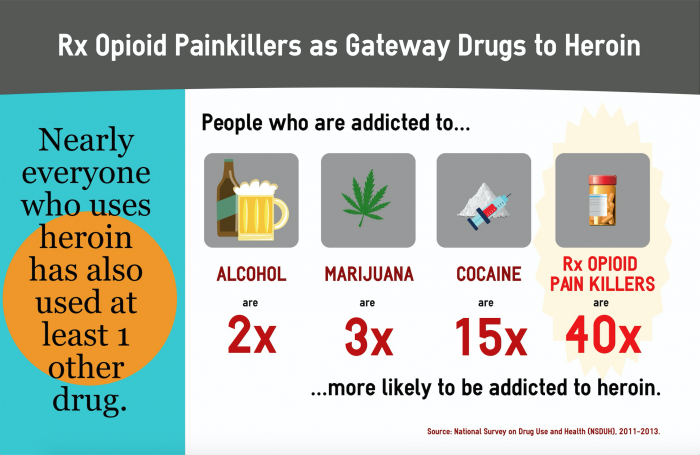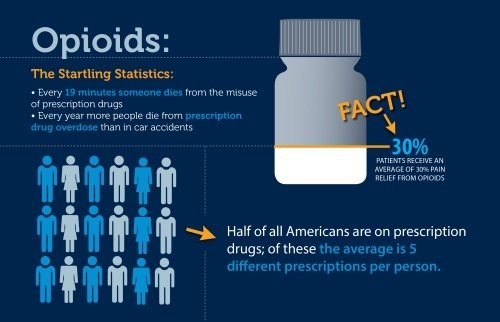This Hospital Will Do Anything to Avoid Prescribing Opioids

The Centers for Disease Control (CDC) has been taking steps to cut opioid misuse and overdoses by issuing guidelines to doctors who prescribe the powerful painkillers. While the recommendations are not legally binding, the agency urges physicians in the guidelines to only prescribe opioids if there are absolutely no other options, and to only prescribe a few days’ worth of pills at a time.
The Food and Drug Administration (FDA) also recently directed drug makers to make opioid pills more difficult to crush and dissolve, thereby making them more difficult to abuse, and will require these painkillers to carry warnings.
But one New Jersey hospital has found their own way to deal with the opioid crisis: they don’t prescribe them.
St. Joseph’s Regional Medical Center has become the first hospital in the country to manage patients’ pain in the emergency room without the use of opioids. No more oxycodone, Vicodin, or Percocet; those who come to the ER at St. Joseph’s are now using acetaminophen (Tylenol), anti-inflammatory drugs, and nitrous oxide – laughing gas – to treat patients’ pain.
Mark Rosenberg, chairman of emergency medicine at the hospital, said the facility’s goal is to treat most patients without opioid painkillers before considering using them. Rosenberg told NPR:
“All chronic pain starts with acute pain. We also know that all drug abuse starts with the first dose. If we can stop using opioids before we give the first dose, then people won’t become addicted.”
And the program, so far, has been largely successful. Of the 300 patients who went through the Alternatives to Opiates (ALTO) program during its first 2 months, 75% did not need opioids.
ALTO was developed by Alexis LaPietra, medical director of pain management at St. Joseph’s. She said:
“What we’ve been doing before didn’t have the best results. Let’s try a different way besides pills, which I know are easy to take. But they have risks.
We are really trying to move outside the box because we don’t want our patients to suffer. We cannot allow this to continue.”
Dr. Jeanmarie Perrone, a professor of emergency medicine at the University of Pennsylvania, tracks opioid use in emergency rooms and says St. Joseph’s unusual methods of treating pain is a step in the right direction. Said Perrone:
“This requires a balancing act. This is the art of medicine. This is the appropriate use of our judgment.”
And you can’t buck the system without coping with your fair share of critics. Many doctors and healthcare workers aren’t convinced the ALTO program can stand the test of time, and are concerned that patients’ needs aren’t being fully met. Perrone explained:
“All we’ve really been told is, ‘Make sure that you’ve treated pain adequately so that the patient thinks that their pain is well-controlled,’ and that that translates into treating them with an opioid and as much as they want.”
According to Perrone, many hospitals are put off by the idea of attempting opioid-alternative programs because it may mean the facilities will receive harsher online reviews.
It’s hard to deny the United States is swimming in a sea of highly addictive painkillers. Two million Americans abuse or are dependent on opioids, and about 500,000 use heroin. Many heroin addicts start out on pain pills.

In 2012, nearly 260 million prescriptions were written for opioids – enough to give every man, woman, and child their very own bottle of painkillers. [2]
More than 29,000 people died from opioid misuse nationwide in 2009.

But opioids aren’t evil, and many people truly need them. The problem isn’t that the drugs are being prescribed, it’s that they’re being prescribed often unnecessarily and irresponsibly. And people are making the decision to sell them on the streets, and abuse them.
Sergey Motov, the associate research director at Maimonides Medical Center in Brooklyn, has been very vocal about his view that doctors should be prescribing fewer opioids, but he recognizes they have their place. Doctors simply need to draw a line in the sand, and not cross it. Motov said:
“I have no problem with opioids, I have a problem with the way we use them: unintelligently, without understanding them. We need to talk to patients. The patient needs to be given an option. We never talk to patients routinely—we just blindly give them medication and hope they feel better.” [2]
Sources:
[1] PIX11 News
[2] CBS New York

Good program – now all they need to do is add cannabis to the alternatives.
That sounds great…………resort to some hocus pocus witch spell to releive people from their pain. Oh yes right thats going to prevent overdoses and help stop addiction. it will do nothing but prevent legitimate people who need narcotic analgesics from getting them. Have you ever heard “where theres a will theres a way”? Addicts will keep finding ingenious ways to get their drugs no matter what obstacles they encounter.